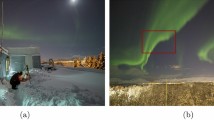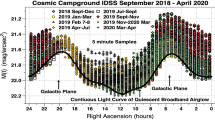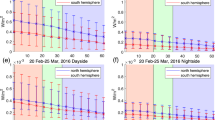Abstract
I HAVE frequently seen the appearances described by Mr. Winstanley in your issue of August 3, and I think I must have seen the one he mentions. I have on two occasions watched similar phenomena caused by the moon. These phenomena require the cloud or clouds, from which they are formed, to be of about the same azimuth as that of the sun (or moon), and vary with the form and motion of the cloud, being, I think, simply a deflection of the sun's rays from the more salient points of the cloud. The streamers I saw on June 27 (see NATURE of July 9) were of an entirely different nature, rising near the south horizon somewhat to the east of the meridian, and flashing towards the moon, which had recently passed the meridian, while the sun was near setting in the N. W.
This is a preview of subscription content, access via your institution
Access options
Subscribe to this journal
Receive 51 print issues and online access
$199.00 per year
only $3.90 per issue
Buy this article
- Purchase on SpringerLink
- Instant access to full article PDF
Prices may be subject to local taxes which are calculated during checkout
Similar content being viewed by others
Author information
Authors and Affiliations
Rights and permissions
About this article
Cite this article
LUCAS, J. Daylight Auroras. Nature 4, 305 (1871). https://doi.org/10.1038/004305a0
Issue date:
DOI: https://doi.org/10.1038/004305a0



